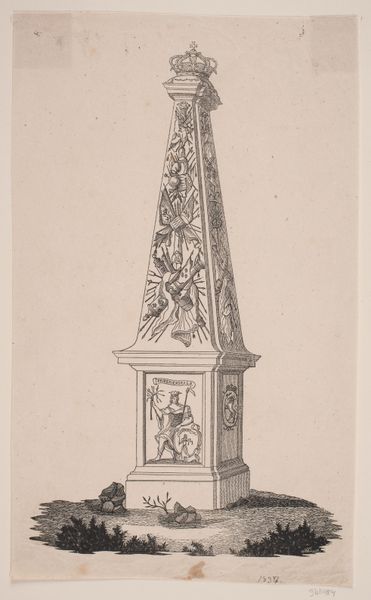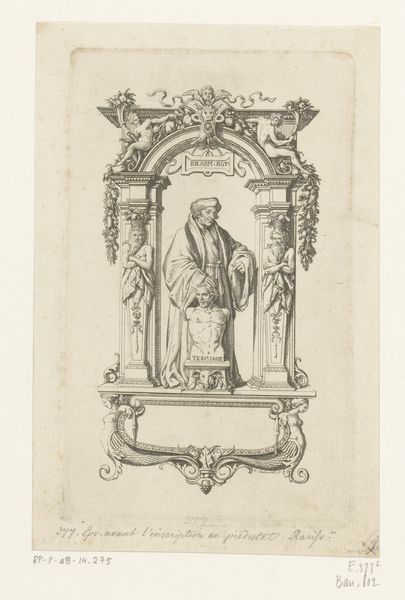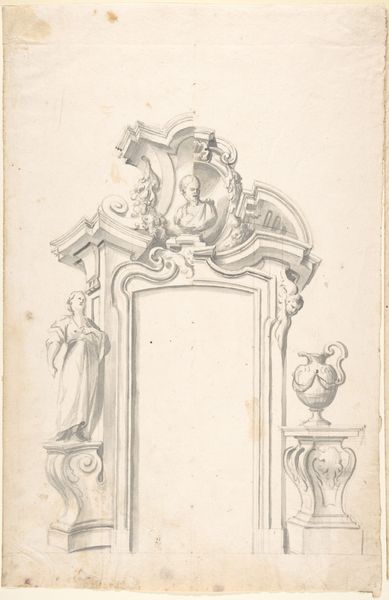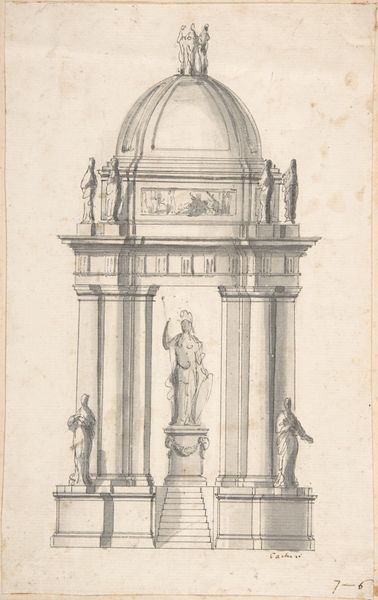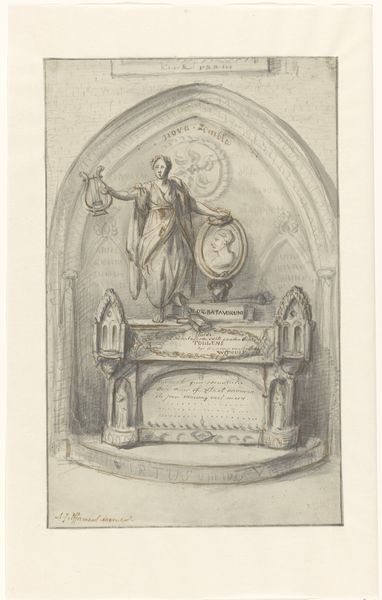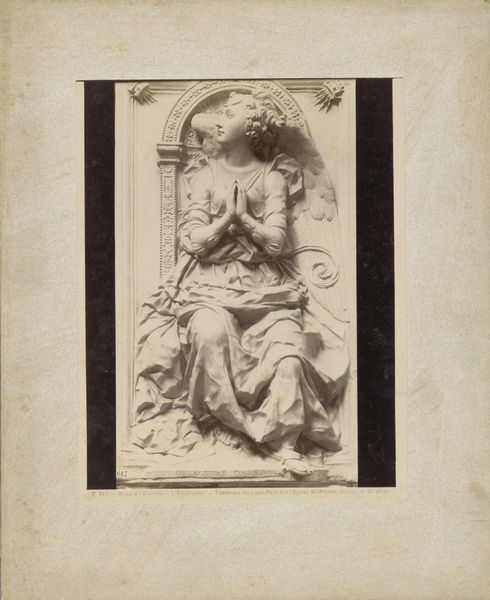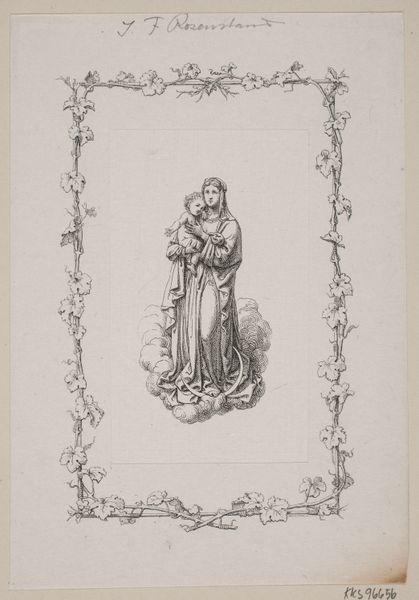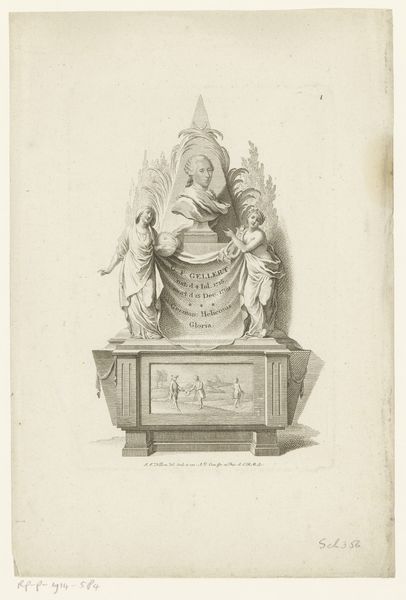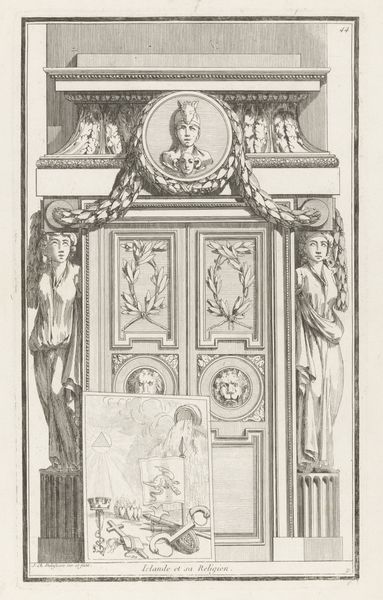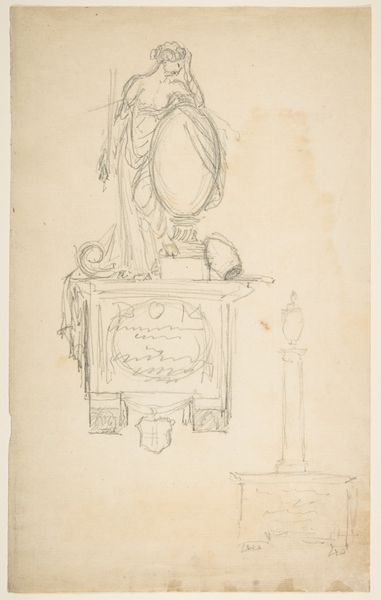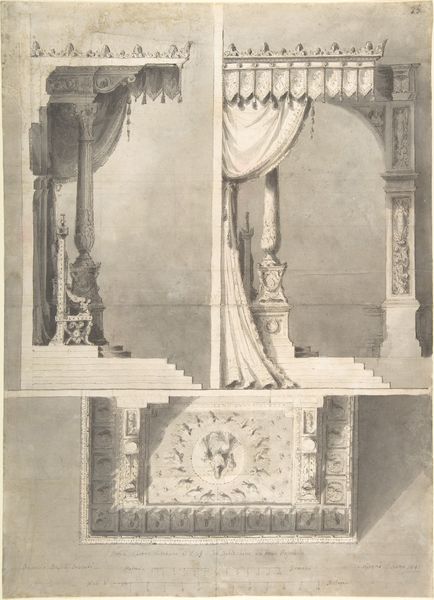
drawing, paper, ink, sculpture, architecture
#
drawing
#
16_19th-century
#
medieval
#
paper
#
ink
#
sculpture
#
history-painting
#
architecture
Copyright: Public Domain
Editor: This is "Tomb," a 19th-century ink drawing on paper by Karl Ballenberger, currently held at the Städel Museum. It has such an austere and somber feeling, very architectural. What do you see in this piece? Curator: This drawing speaks volumes about the cultural obsession with history and mortality characteristic of the 19th century. Consider how Ballenberger, through his engagement with medieval aesthetics, invokes not just a specific artistic style but an entire value system, one that is inextricably linked to power, religion, and the construction of collective memory. Does it strike you as idealized or historically accurate? Editor: Perhaps a little idealized? There's an elegance to it. How do you mean power and memory? Curator: Well, tombs are, quite literally, monuments to power. They enshrine particular figures and narratives, shaping how we remember the past and, consequently, how we understand our present. The presence of what appears to be an angel speaks to how faith and history become tools for legitimizing authority. Who do you think this tomb was designed for and how does it function within its cultural context? Editor: It’s interesting to consider it in the context of power structures… I suppose I was just seeing it as a design for a tomb, rather than an active statement. Curator: Exactly! And the fact that we might overlook its inherent power dynamics reveals how deeply ingrained those structures remain, even in our contemporary viewing. Art becomes a site for both perpetuating and potentially subverting these power dynamics, a push-pull between artist intention, cultural context, and the viewers themselves. What do you think? Editor: I think you've given me a lot to consider! I’ll definitely be approaching art with a new awareness from now on. Curator: That is all I could hope for; and, in turn, your initial response also guided my views.
Comments
No comments
Be the first to comment and join the conversation on the ultimate creative platform.

